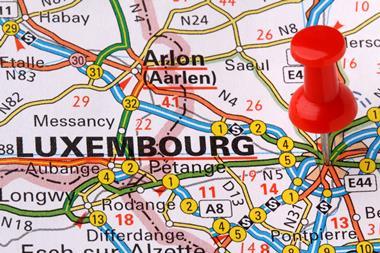RSA posted an improved combined operating ratio after exiting a number of MGA deals
By Saxon East
Philippe Maso y Guell Rivet put it quite beautifully.
On the topic of MGAs, the former AXA UK boss told Insurance Times: ”It can have legs when we talk about niche products for specific segments of the market, where it doesn’t make sense for an insurer to build the capability. But an MGA takes the risk on behalf of someone who is going to carry the can. Not a lot of industries do this.
“It’s like in the music industry, if you were a big label and someone chooses the next big band for you. If it doesn’t work, he gets his fee anyway and goes off to the Bahamas.”

After a long slog, RSA UK boss Stephen Lewis says business is on a positive path
Perhaps if RSA had heeded those words at begining of this decade, things could have got better sooner.
Yesterday’s results revealed an improved combined ratio for RSA, due to better pricing, flushing out poor business and exiting a number of MGA deals.
It was always a mystery why RSA was so keen to push ahead with MGA deals over the last ten years, when the likes of Aviva and AXA were scaling back.
This became even more apparent when their combined ratios for the UK were considerably better than RSA.
Of course, MGAs were not the only reason RSA combined ratio had historically lagged behind. It has a big property portfolio that gets hit with weather shocks, there were issues with pricing and also its distribution needed correcting.

RSA results yesterday are good news: it’s been a long journey, but RSA has swallowed the reality of a diminished but more profitable book.
Its results in the future should be less volatile, and this will benefit them in the long run.
Smaller but more beautiful is the Stephen Hester way.
Tight is right
But once again this throws MGAs into the spotlight.
Insurers piling into MGAs, backing vanilla products en masse is a dangerous game. The MGA has to deliver enough underwriting profit for the insurer, as well as getting its cut.
But if it’s not specialist, then why can its underwriting and pricing deliver better results than rival insurers who have greater scale?
Furthermore, there is frequently an unseen cost to insurers in that they have to mop up a lot of back office work and administration not done by the MGA.
The real strength of an MGA is in specialist products, but even then there are risks.
Insurers may want to have a slice of say, solicitors’ professional indemnity, but can they be sure the MGA will deliver profits in tricky sectors?
The ingridients to a succesful insurer and MGA relationship are as follows: the MGA should be in specialist lines of business, or doing something unqiue, have a proven track record of COR results and offer a fair deal to both parties.
There are many MGAs out there doing a fantastic job, frequently delivering great service to brokers and customers - as our MGAA, Broker Service Survey and E-trading surveys show.
A real strength of MGAs is that they can deliver quick service, show flexiblity on underwriting and work with a personal touch - something that large insurers frequently struggle with due to their size, IT systems and staff turn over.
Only if the formula is right, can everyone enjoy their party in the Bahamas.
Hosted by comedian and actor Tom Allen, 34 Gold, 23 Silver and 22 Bronze awards were handed out across an amazing 34 categories recognising brilliance and innovation right across the breadth of UK general insurance.




















































No comments yet